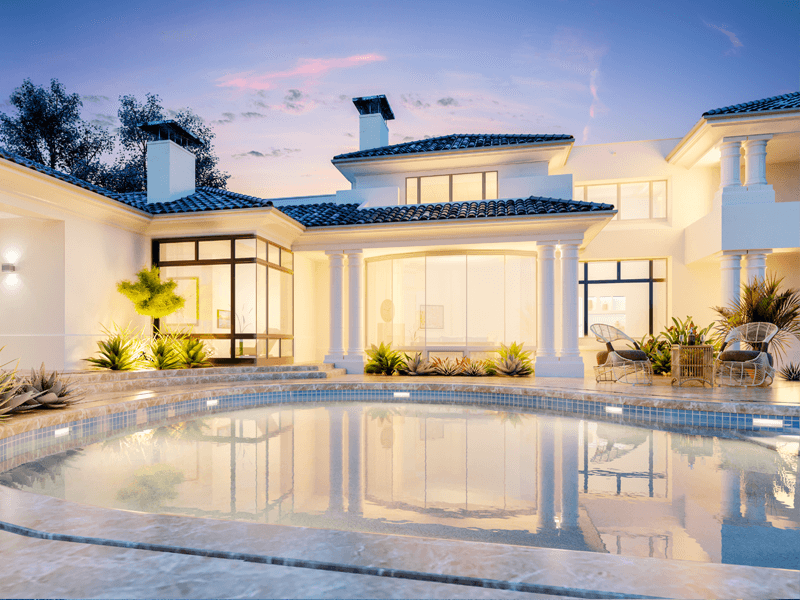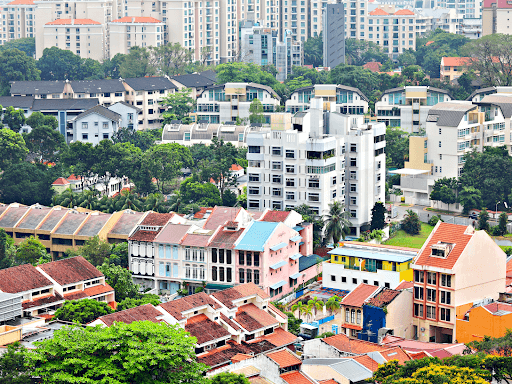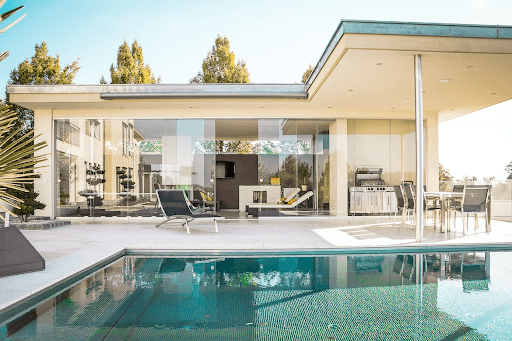
Good Class Bungalows, or GCB in short, belong to the highest and most prestigious type of landed housing in Singapore because of the planning constraints imposed by the relevant authorities. Good Class Bungalows are also nestled in very low density zones, which preserves the exclusivity of the environment. While the majority of the population can never afford to acquire a good class bungalow (GCB) in their lifetime, those that can are considered to be the extremely wealthy upperclassmen. However, that doesn’t imply you can’t be interested in them, particularly when you hear about GCBs being purchased by young, affluent tycoons.
But if you’re unfamiliar with good class bungalows, you may well be thinking, “Just what is a Good Class Bungalow?”
Here’s a quick guide to all you need to know about these prestigious homes.
What are good class bungalows?

While most people think of GCBs as super-sized and luxurious residences for the rich, there are two key differences between them and ‘regular’ Singapore bungalows: size and geographic location.
Good Class Bungalow Areas GCBA were officially gazetted in 1980 with 39 areas formally safeguarded as Good Class Bungalows Areas ( GCBA).This is to maintain their rarity, status, and environmental quality from the intrusion of other, more intensive forms of landed housing such as bungalows, semi – detached, corner terraces and intermediate terraces.
Where are GCBs located?
District 10
Belmont Park, Bin Tong Park, Brizay Park, Bukit Sedap, Chatsworth Park, Cluny Hill, Cluny Hill, Cluny Park, Cornwall Gardens, Dalvey Estate, Ewart Park, First/Third Avenue, Ford Avenue, Fourth / Sixth Avenue, Gallop Road / Woollerton Park, Garlick Avenue, Holland Park, Holland Rise, Leedon Park, Maryland Estate, Nassim Road, Oei Tiong Ham Park, Queen Astrid Park, Rebecca Park, Ridley Park, Ridout Park, Victoria Park, White House Park
District 11
Bukit Tunggal, Caldecott Hill Estate, Camden Park, Chee Hoon Avenue, Eng Neo Avenue, Raffles Park, Swiss Club Road
District 20
Windsor Park
District 21
Binjai Park, Kilburn Estate, King Albert Park
District 23
Chestnut Avenue
Though there is no exact figure, there are around 2,700 GCBs in the 39 gazetted zones. The amount of Good Class Bungalows can only be increased when there is a subdivision of an existing plot in two or more units, provided they meet the minimum criteria set out by the Urban Redevelopment Authority.
What are the requirements of a Good Class Bungalow in Singapore?
In terms of scale, the Urban Redevelopment Authority (URA) states that GCBs cannot exceed over two stories tall. This requirement is not inclusive of an attic and a basement. All GCBs must possess a minimum land area of 1,400 square metres (approx. 15,069 sq ft), have a minimum plot width of 18.5 metres and a minimum plot depth of 30 metres However owners of these Good Class Bungalows will only be able to use 40% of the land to build their house, also known as the site coverage. The residence might take up to 40% of the available area, with the balance 60% allocated to flora and landscaping (pools, gardens, tennis courts, etc).
Can foreigners purchase a Good Class Bungalow in Singapore?

You might well have read that foreigners and Singapore Permanent Residents (PRs) are not permitted to purchase landed residences in Singapore (except Sentosa Cove estates), however this is not totally correct.
But before that, who qualifies as a foreigner? The Singapore Land Authority (SLA), which oversees land usage and property ownership, considers an individual to be a foreigner if they are not a Singapore citizen, Singapore corporation, Singapore limited liability partnership, or Singapore society.
Likewise, when we take a closer glance at the rules and regulation set out by SLA , we see that foreigners are required to obtain special approval from the Singapore Land Authority Land Dealings Approval Unit (LDAU) before proceeding to acquire any “Restricted Property” in Singapore.
The following types of properties are classified to be “Restricted Properties”: Vacant residential land; terrace house; semi-detached house; bungalow / detached house; strata landed house; shophouse (for non-commercial use); association premises; place of worship; and worker’s dormitory / serviced apartments / boarding house.
You’ll notice that landed properties are not completely off-limits to foreigners. SLA’s LDAU is able to grant special approval with a rate of success mostly driven by the following variables. The foreigner must have been a Singapore Permanent Resident for at least five years and must have made a remarkable contribution to the economy. This is determined by taking into account elements such as employment income that is taxed in Singapore. To summarize, foreigners can purchase a GCB residence, but only under the criteria outlined above.
How much do a Good Class Bungalow in Singapore cost?
GCBs are substantially more expensive than the normal Singapore bungalow due to its rarity and powerful status signal. It is not unusual for GCBs to trade for at least $8 million. In 2019, 34 GCB transactions totaled $645.7 million. The most costly GCB so far was an 84,453 sq ft GCB at 33 Nassim Road. It was acquired for a stunning $231 million.
Discover Luxury Homes
GCBs aren’t only scarce, but also frequently in short supply. Because GCBs are located in low population density and calm places, they are particularly tempting to purchasers. They bestow a level of distinction and provide seclusion to the owners. GCBs are defensive investments that can ride out unpredictable market circumstances due to their rarity and freehold ownership. This makes them a good store of wealth and a desirable property to be transferred down to subsequent generations as part of succession planning.



